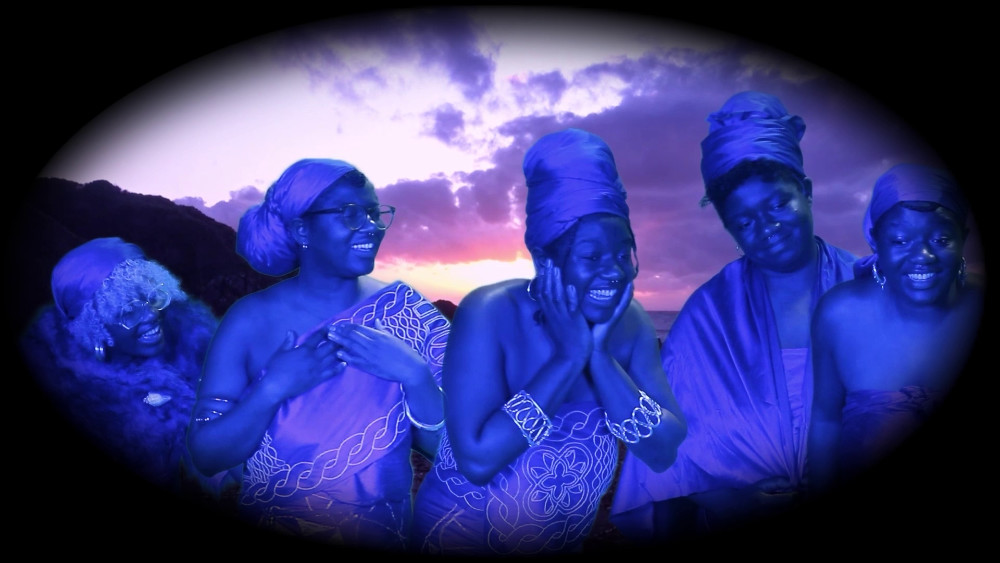
Selected for AFI '25 by Tramway, Glasgow, Scotland.

What compels you to work with moving image, and when did you first become interested in the medium?
I have always been taken by the persuasive nature of the moving image as beamed to the masses: through video advertising. As a child, I always felt quite hypnotised by the infomercials that played on a loop after a certain time on the music channels, and I’m still taken by the ‘free webinar’ pop-ups that populate certain unscrupulous websites. I am drawn in by their pervasive, low-level propagandistic visual language; it feels like the most affective language for storytelling.
Can you speak about the potential that dreaming and altered states of reality offer individuals and societies? How do you feel this is reflected in filmmaking and in your artwork specifically?
I’m gassed up by Octavia Butler’s words: “You got to write yourself in. Whether you were a part of the greater society or not, you got to write yourself in”. I think all history is speculative, and it feels powerful and fun to dream myself (and characters that look like me) into histories that don’t include me in the popular imagination. I love fan theories, pseudoscience, internet hoaxes, and gossip; I hold them on the same level as recorded, widely-accepted history.
Please share a list of books, music, films, artworks, thinkers, spaces and places that inspire your practice, and in particular have fed into your thinking around this film.
I watched a lot of Nollywood films on VHS as a kid, and whilst many of the plotlines and character arcs have dissolved from my head, many of the visuals are still firmly imprinted in my memories. I was particularly terrified and titillated by films involving witchcraft, like ‘Sakobi: The Snake Girl’, ‘Oganigwe’ and ‘Karishika’. The visual effects and sound design from these films informed Neyinka and the Silver Gong hugely.
The film also takes a lot from the idea of the hero’s journey or monomyth, tropes from which are threaded through another huge inspiration of mine, C.S. Lewis’ Chronicles of Narnia. In a strange way, I find the series’ heavy handed Euro-Christian allegory really funny, but I also unironically love the worldbuilding and the fantastical descriptive language.
The trailer for ‘Braveheart’ and its syrupy remixing of history also wove its way into my thinking. Having not seen the film, it was interesting to explore how the trailer distils the film into instantly recognisable ingredients (a hauntingly romantic melody; rolling green hills; a half blue-painted face; “To freedom!”) that connote a certain idea of ‘Scottishness’ to the wider world, and how the persuasive, reductive filmmaking language of a trailer echoes persuasive, reductive nationalistic mythmaking
What new projects or lines of research are currently preoccupying you?
I’m continuing my research into water as a repository for Black histories and futures, particularly thinking about the idea of eroded rock sediment rippling through water as a metaphor for the diasporic dispersal of Black bodies through multiple, concurrent histories and geographies. I’m interested in the status and the symbolism of the resultant mud.
I’ve also just finished a semi-autobiographical short film about the silencing of Black women in the workplace, fantastically set in the Account Department of a supervillain’s lair. This was particularly informed by Diane Abbott’s mistreatment in Parliament last year (and many years!), alongside my own overwhelmingly negative experiences in offices, retail, and pyramid schemes.

© 2025 www.crawfordartgallery.ie